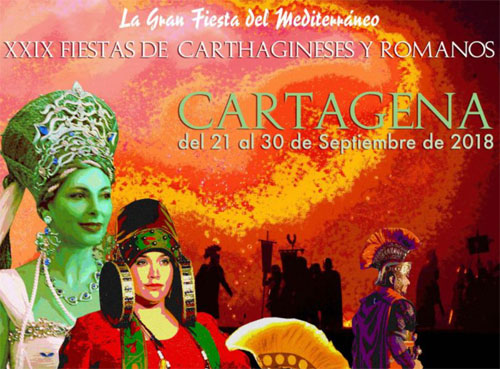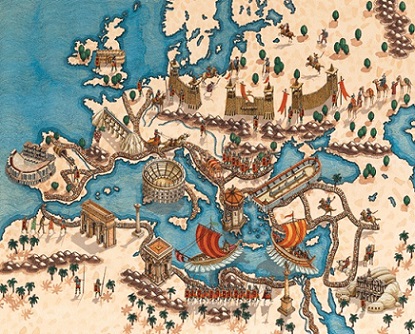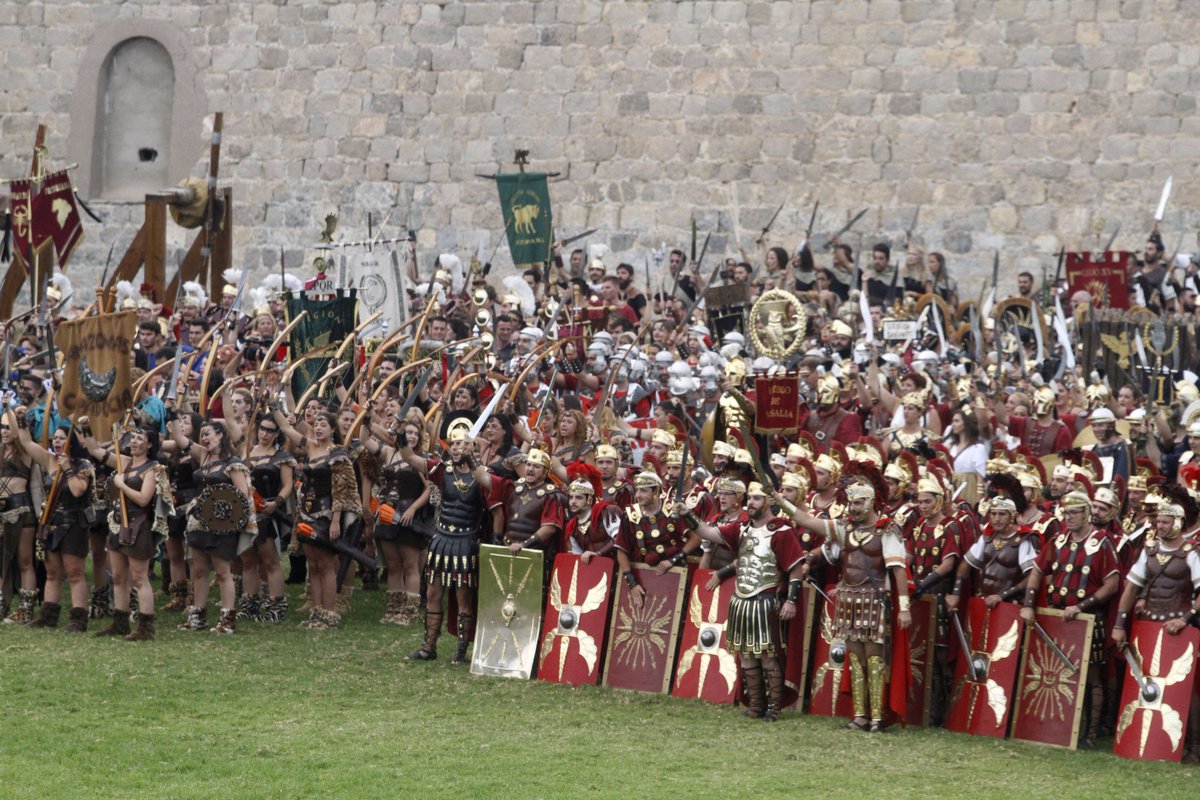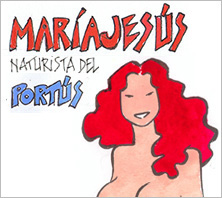Y después del verano ¡Carthagineses y Romanos! Con esta frase los cartageneros avecinan una de sus fiestas más destacadas.
Es durante la segunda quincena del mes de septiembre, este año exactamente del viernes 21 hasta el domingo 30 de septiembre cuando se reviven los hechos que acontecieron en la ciudad a lo largo del siglo III a. C. Dos son los bandos, por una parte las tropas (carthagineses) y por otra las legiones (romanos). Sin duda alguna, estas fiestas permiten a los cartageneros y turistas disfrutar de una auténtica recreación, ya sea en trajes y vestidos, en las actuaciones o en las formas de vida Qart Hadast y de la vieja Cartago Nova.
Toda la programación aquí : http://cartaginesesyromanos.es/wp-content/uploads/2018/08/programa-Carthagineses-y-Romanos-2018.pdf
ORIGEN
Amílcar Barca, estratega de Carthago (Túnez) llega a la Península buscando en Iberia el poder perdido en puntos de Mediterráneo. Amílcar fue fundando ciudades, no solo en la costa si no en el interior, entre las tribus celtíberas.
Tras la muerte de Amílcar, Aníbal y Asdrúbal siguen esta labor. A la vista de Mastia (etnia ibérica), Asdrúbal en lugar de arrasarla a sangre y fuego, pacta con su pueblo y funda Qart-Hadasht (la ciudad nueva) que sería la principal base de operaciones carthaginesas en todo el Mediterráneo.
Asdrúbal engrandece la ciudad construyendo palacios y templos, la rodea de altas murallas que la hacen casi inexpugnable y Aníbal se casa con una princesa del lugar. Qart-Hadast se convierte en el centro económico, desde donde se comerciaba directamente con Carthago (Túnez) y con todo el Norte de África.
Mientras tanto crecen los problemas en Sagunto, ciudad griega bajo la protección de Roma aunque en territorio bajo el dominio de Carthago. Aníbal ataca Sagunto que cae en su poder y Roma declara la guerra a Carthago. Aníbal marcha a la conquista de Roma con un poderoso ejército llegado a Qart-Hadasht.
Roma envía legiones a la península Ibérica tras la caída de Sagunto. El general romano Publio Cornelio Escipión desembarca en Iberia con el objetivo de terminar con el poder de los Carthagineses y para ello planea el ataque de Qart-Hadast. Organiza un ataque simultáneo a la ciudad por mar y por tierra.
El combate es intenso y Qart-Hadast, la capital púnica de Iberia, cae en manos de Roma. El general Publio Cornelio Escipión entra triunfante en la ciudad que en adelante se llamará Carthago-nova, durante el periodo de dominación romana (actual Cartagena).
Estos hechos son los que la Historia relata y los que como un hermoso proyecto histórico y cultural, con ahínco, ilusión y un excelente trabajo de documentación, un grupo de valientes y generosos ciudadanos ponen en marcha en el año 1990.
Proyecto que se convertiría en un fenómeno social, implicando a más de 5000 participantes y recreando lo sucedido en la segunda guerra púnica.
CELEBRACIÓN
Con 25 tropas Carthaginesas y 25 legiones Romanas, se escenifican durante 10 días las hazañas más importantes ocurridas en la ciudad entre el 223 a.C. y el 209 a.C. junto a los personajes de Aníbal y su vencedor Publio Cornelio Escipión apodado “El Africano”.
Con una puesta en escena rigurosa, un vestuario y ambientación extraordinarios y un armamento sorprendente asistimos a una de las celebraciones más interesantes de nuestro país. La puesta en escena de los actos se realiza, en muchas ocasiones, en los mismos lugares donde sucedieron en la antigüedad. Las recreaciones históricas comienzan con la creación de Qart-Hadasht ciudad fundada por los Carthagineses con Asdrúbal al frente.
Durante los días que duran las celebraciones se podrá asistir a espectáculos como las Bodas de Aníbal e Himilce, el Oráculo de Fanit, el desembarco de la Armada Carthaginesa, la contratación de las Tropas Mercenarias y el gran desfile de la marcha de Aníbal a Roma. Podremos ver una Sección Ordinaria del Estado Mayor Romano, la destrucción de Sagunto y una Sesión Plenaria del Senado de Roma.
Impresionante la puesta en escena de la singular batalla en el día de la Victoria, la rendición de la ciudad o la cesión del Mando a la nueva autoridad romana. Con la proclamación de la Ley de Roma, la púnica ciudad de Qart-Hadasht pasa a ser la ciudad romana de Carthago-Nova. El impresionante y espectacular gran desfile de tropas y legiones que involucra a miles de personas, es el broche final de las fiestas.
En un recinto de enorme dimensiones los 50 grupos que forman Carthagineses y Romanos decoran el campamento, instalando en él bares abiertos a todos los visitantes. De esta manera el campamento se convierte en una gran ciudadela ambientada en la antigüedad donde el arte y la simbología de Roma y Carthago; Grecia, Iberia y Fenicia presiden todas las construcciones. Alegría, bullicio y animación son los protagonistas.
Campamento donde se puede compartir mesa con el mismísimo Escipión, comer tarta de boda con Aníbal, brindar con un guerrero romano o asistir a la invasión de las tiendas enemigas. Cada Tropa y cada Legión tiene su sede en este campamento, cada uno su chiringuito ambientado según su tropa, donde se podrá disfrutar de la historia y su ambiente, su fiesta, al aire libre hasta la madrugada.
Durante diez días Cartagena y sus habitantes se visten de historia y la reviven, recordando las hazañas de los héroes de Carthago y Roma con esta experiencia inolvidable, este grandioso espectáculo en que la historia de la ciudad se lleva a la calle y la ofrece a todos como un hermoso regalo.
CARTHAGINESES AND ROMANS 2018
And after the summer, Carthaginians and Romans! With this phrase the Cartageneros are coming to one of their most important parties.
It is during the second fortnight of the month of September, this year exactly from Friday 21 to Sunday 30 September when the events that took place in the city throughout the 3rd century BC are revived. C. There are two sides, on the one hand the troops (Carthaginians) and on the other the legions (Romans). Undoubtedly, these parties allow Cartagena and tourists to enjoy an authentic recreation, either in costumes and dresses, in performances or in the Qart Hadast life forms and the old Carthage Nova.
All the programming here: http://cartaginesesyromanos.es/wp-content/uploads/2018/08/programa-Carthagineses-y-Romanos-2018.pdf
ORIGIN
Amílcar Barca, strategist of Carthago (Tunisia) arrives at the Peninsula looking for Iberia lost power in points of the Mediterranean. Amílcar was founding cities, not only on the coast but also in the interior, among the Celtiberian tribes.
After the death of Amílcar, Aníbal and Asdrúbal continue this work. At the sight of Mastia (Iberian ethnic group), Asdrúbal instead of destroying it with blood and fire, agrees with his people and founds Qart-Hadasht (the new city) that would be the main base of Carthaginian operations throughout the Mediterranean.
Asdrúbal enlarges the city building palaces and temples, surrounds it with high walls that make it almost impregnable and Hannibal marries a local princess. Qart-Hadast becomes the economic center, from where it was traded directly with Carthago (Tunisia) and with all of North Africa.
Meanwhile the problems grow in Sagunto, a Greek city under the protection of Rome although in territory under the rule of Carthago. Anibal attacks Sagunto who falls into his power and Rome declares war on Carthago. Aníbal marches to the conquest of Rome with a powerful army arrived at Qart-Hadasht.
Rome sends legions to the Iberian Peninsula after the fall of Sagunto. The Roman general Publio Cornelio Escipión disembarks in Iberia with the aim of ending with the power of the Carthaginians and for it plans the attack of Qart-Hadast. It organizes a simultaneous attack to the city by sea and by land.
The combat is intense and Qart-Hadast, the Punic capital of Iberia, falls into the hands of Rome. General Publio Cornelio Escipión enters triumphant in the city that in future will be called Carthago-nova, during the period of Roman domination (present Cartagena).
These facts are those that History tells and those that as a beautiful historical and cultural project, with zeal, enthusiasm and an excellent documentation work, a group of brave and generous citizens put into operation in the year 1990.
Project that would become a social phenomenon, involving more than 5000 participants and recreating what happened in the Second Punic War.
CELEBRATION
With 25 Carthaginian troops and 25 Roman legions, the most important feats that took place in the city between 223 a.C. and 209 a.C. next to the characters of Hannibal and his winner Publius Cornelius Scipio nicknamed «The African».
With a rigorous staging, an extraordinary wardrobe and atmosphere and a surprising armament we attend one of the most interesting celebrations of our country. The staging of the acts is performed, in many cases, in the same places where they happened in antiquity. The historical recreations begin with the creation of Qart-Hadasht city founded by the Carthaginians with Asdrúbal in front.
During the days that the celebrations last, it will be possible to attend shows such as the Weddings of Aníbal and Himilce, the Oracle of Fanit, the disembarkation of the Carthaginian Navy, the hiring of the Mercenary Troops and the great parade of the march of Hannibal to Rome. We can see an Ordinary Section of the Roman General Staff, the destruction of Sagunto and a Plenary Session of the Senate of Rome.
Impressive the staging of the singular battle on Victory Day, the surrender of the city or the cession of the Command to the new Roman authority. With the proclamation of the Law of Rome, the Punic city of Qart-Hadasht becomes the Roman city of Carthago-Nova. The impressive and spectacular great parade of troops and legions that involves thousands of people, is the final touch of the festivities.
In an enclosure of enormous dimensions the 50 groups that form Carthaginians and Romans decorate the camp, installing in him bars open to all the visitors. In this way the camp becomes a great citadel set in antiquity where the art and symbolism of Rome and Carthago; Greece, Iberia and Phenicia preside over all constructions. Joy, bustle and animation are the protagonists.
Camp where you can share table with Scipio himself, eat wedding cake with Hannibal, toast with a Roman warrior or attend the invasion of enemy shops. Each Troop and each Legion is based in this camp, each one its chiringuito set according to its troop, where you can enjoy the history and its environment, your party, outdoors until the early morning.
For ten days Cartagena and its inhabitants dress up in history and relive it, remembering the exploits of the heroes of Carthago and Rome with this unforgettable experience, this great spectacle in which the history of the city takes to the street and offers it to all as a beautiful gift.





